Glass Is Good!
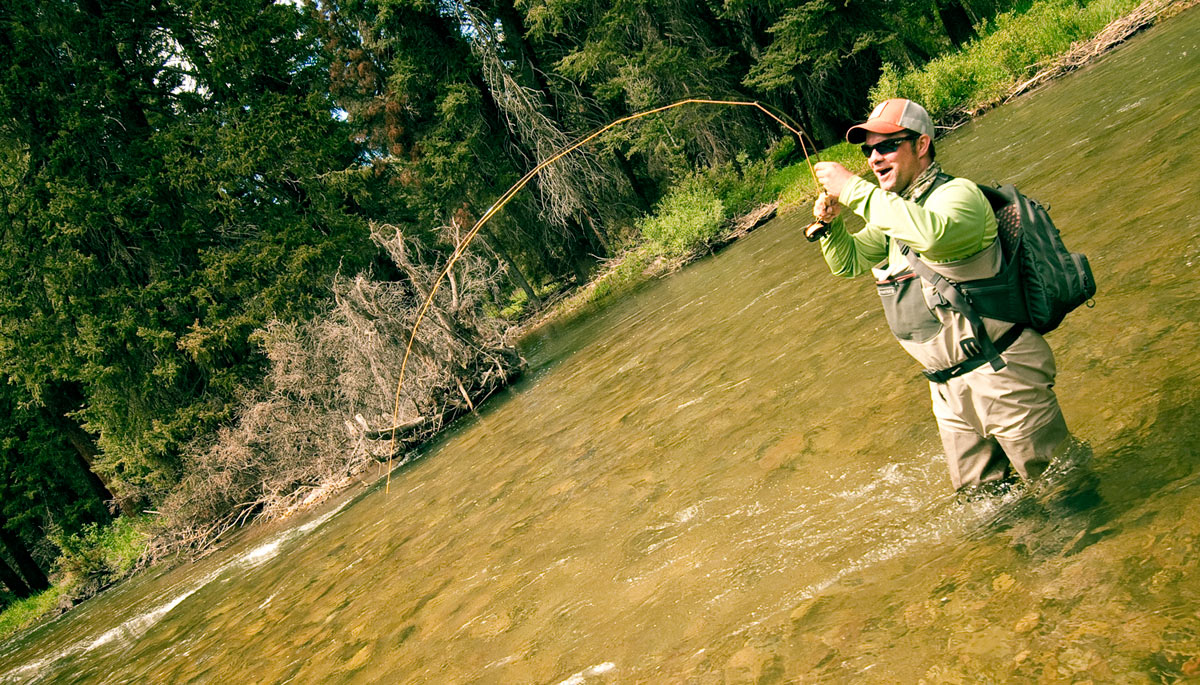
By Justin Pickett
Oh, the world of fast fly rods….
They can be great tools. Some of my favorite rods are most definitely faster than your “average joe” rod.
But what about for the beginning angler? Or someone trying to work the kinks out of their casting stroke? Is a fast rod the best thing for this angler?
Personally, I believe that fiberglass rods are the best fly rods for a beginning angler to learn the mechanics of the fly cast, and how a proper fly cast should feel. Many of the faster fly rods on the market these days are unforgiving to the beginner. These rods require powerful strokes/hauls and quicker tempos that are often hard for a beginning fly caster to achieve. In my opinion, it steepens the learning curve and can hinder one’s ability to become a proficient caster. Fiberglass rods require you to slow things down. Way down. This allows you to improve the timing of your casting stroke and work on the fundamentals. There’s more time between your backcast and forward strokes to perfect your hauls, line shooting, and accuracy. And it’s much easier to diagnose those pesky yips in your cast.
Don’t have a glass rod? Don’t want to buy one? Here’s a way to slow down your own fly rod.
I always bring a reel spooled up with
Read More »12 Tips For Epic Fly Fishing Trips On The Cheap
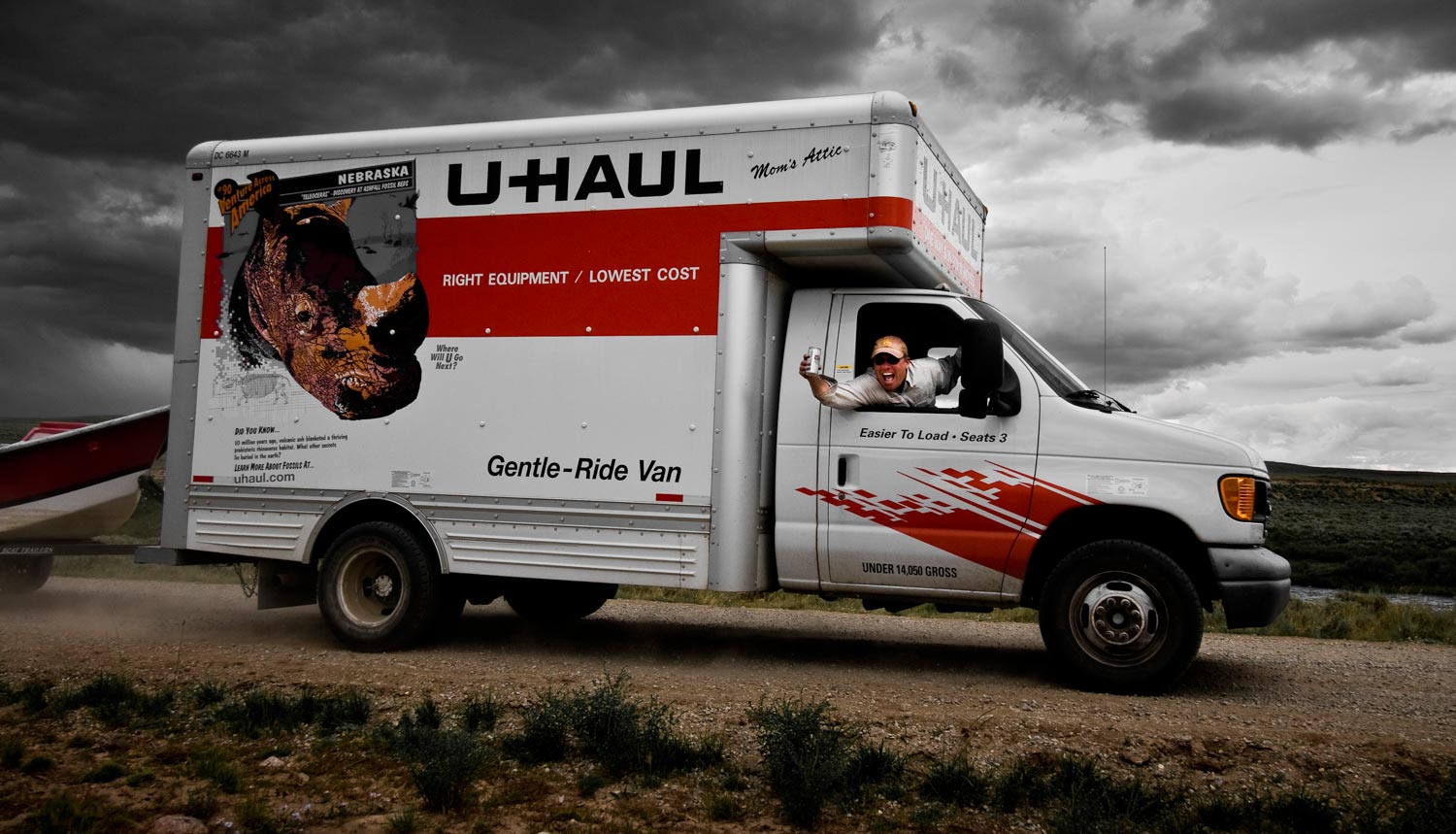
You may be poor, but you don’t have to fish like it.
Some of the greatest fly fishing adventures I’ve taken have cost me the least. I love fishing in exotic locations and spending time at great fishing lodges. Who wouldn’t? But that’s a fairly recent thing for me and primarily funded by my Nikon. Working for my fishing days has paid off for me, but that’s not an option for everyone.
I have never let a lack of funds get between me and great fly fishing. I’ve always figured out a way to get on the water and create some kind of epic adventure. Over the years I’ve figured out one or two tricks that make for great fly bum trips on the cheap. I’m going to share a few of them so you can do the same.
TEAM UP
There’s nothing more helpful than a good fishing buddy, or two. Having good friends to share both costs and experience with will make your fishing trips a hundred times better. A buddy can do more than split the cost of gas. He might lend you a rod or take turns rowing the boat. He may have knowledge about water that you don’t. He may just tell a good story or be a good listener. Finding good, compatible friends to travel and fish with is the most important step you can take in having a truly epic trip.
CAMP
Hotels cost money and do very little to enhance the fishing experience. Camping saves you a bundle and makes the trip a whole lot more special. Waking up on the river beats the hell out of a continental breakfast. Get your camping gear in order and go as light as possible. Less time messing with gear means more time fishing. I have gone so far as to buy an extra tent, sleeping bag and a few necessities which I keep at a friend’s house in Denver. If I find a cheap ticket I don’t even have to pay the baggage fees.
DRIVE
I drive to Idaho and Wyoming from Georgia on a regular basis. I don’t do it because I enjoy the scenery of western Kansas. I do it because it saves me a bundle. Gas is not cheap but it’s often at least as cheap as an airplane ticket. Driving allows me to take advantage of a whole host of cost-cutting measures.
I can carry all of my camping gear and even sleep in the truck sometimes. I tow my Adipose skiff which saves me renting a boat. I don’t have the expense of a rental car. It saves a fortune. I even have a power inverter in the truck to charge batteries or run small electronics. I’m pretty self-sufficient when I’m on the road.
I will frequently coordinate the drive with buddies who choose to fly. They help out with the gas money and I pick them up at the airport and we all save the cost of a rental car. Driving to your fishing destination just gives you a lot more options.
Read More »Bruce Chard’s Double Haul Drill
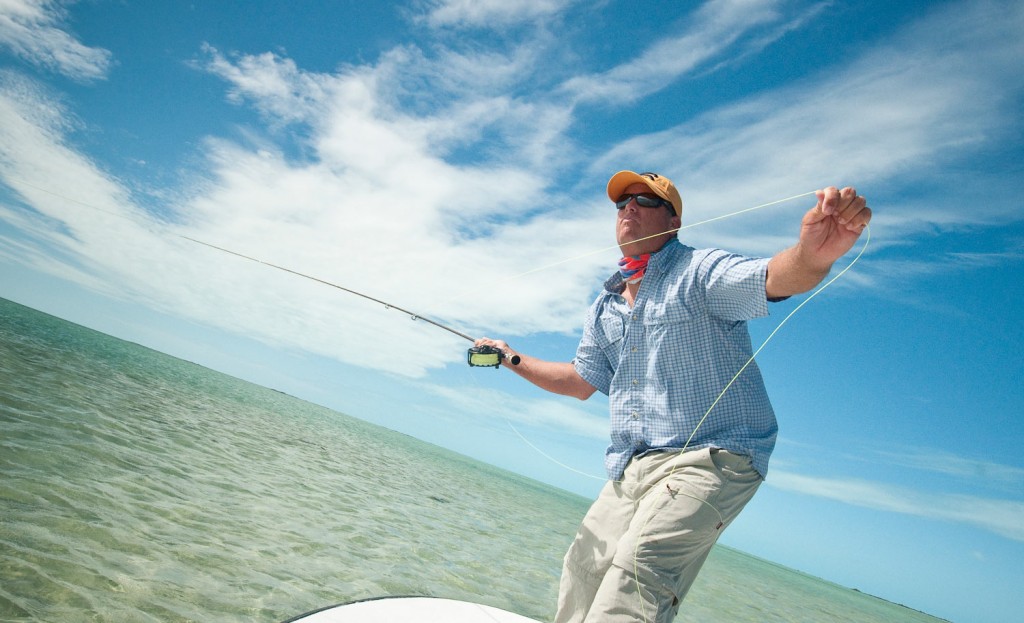
Today begins a special five part video tutorial on building blinding line speed.
Line speed is the most important component in successful salt water fly fishing. There’s plenty of finesse involved but line speed is the cost of admission. If you can’t build the speed you need, you can’t catch the fish you want.
My good friend Bruce Chard is a certified master casting instructor and a truly inspiring caster. The first time, hell the first hundred times, I saw Bruce unload my jaw dropped. It’s humbling to watch what this guy can do with a fly rod. Bruce has a rare blend of skills. The technical know how of an engineer and the physical prowess of an athlete. With that in mind I asked him to help me create a set of videos that can take you from beginner to rock star. We’re calling it the Ultimate Line Speed Series. There’s a lot to cover but we’re starting here with everything you need to know about line speed.
We’re going to start slow, with the double haul. The basic building block of a dynamic cast. By day five we will be into some seriously advanced technique that is going to
Read More »Golden Dorado on the Fly Require a Mix of Skills
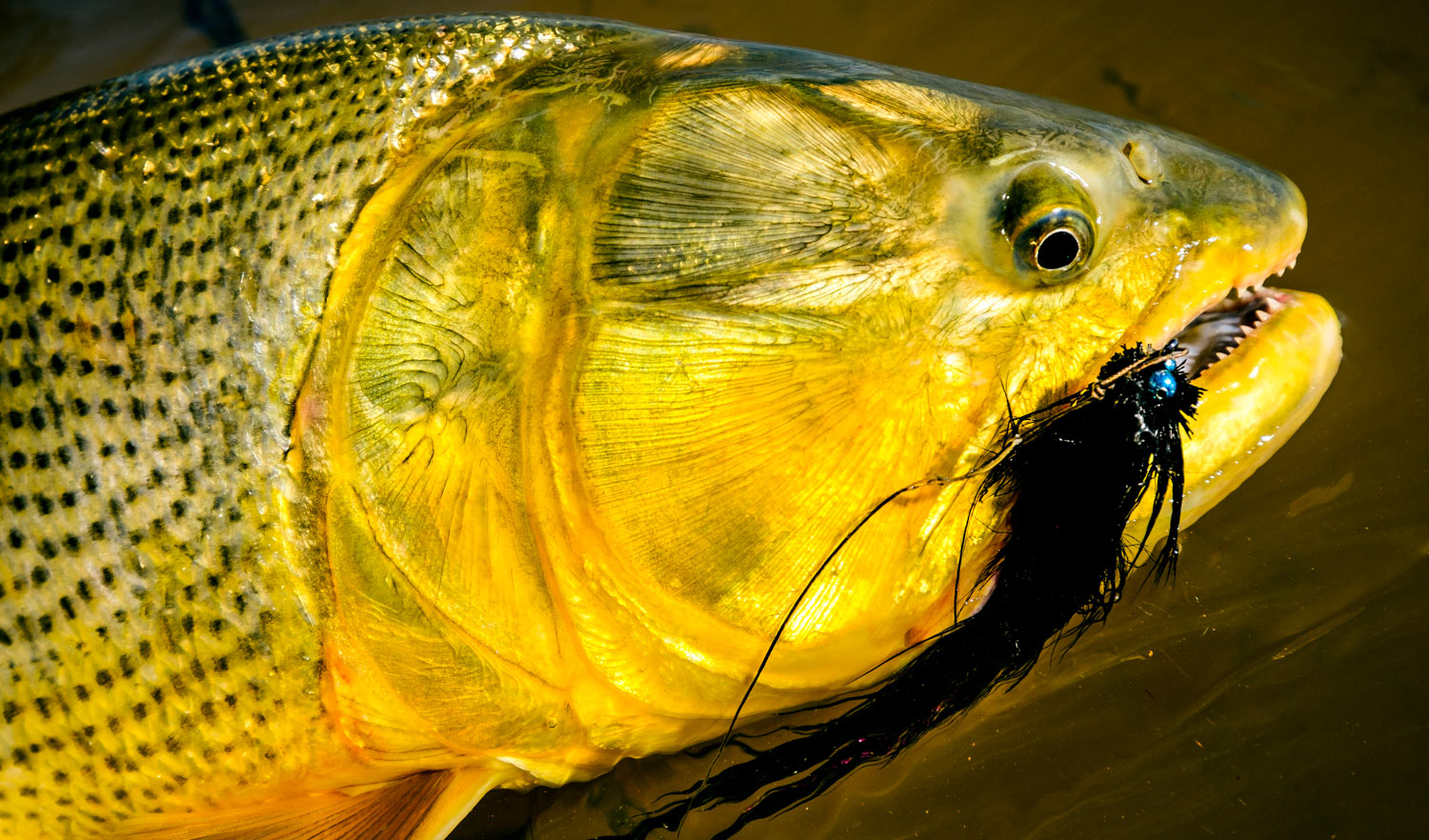
By Louis Cahill
There’s nothing cooler than catching a new species on the fly.
I recently had my first encounter with the golden dorado, a species I have coveted for some time. I hosted a group at the Parana On The Fly lodge with Andes Drifters for a week and we caught an amazing array of species including piranha, pacu, pirapita, boga and, the king of the river, the golden dorado.
The dorado has quite a reputation as a sport fish and it does not disappoint. A beautiful fish and an acrobatic fighter, it’s known primarily for its unchecked aggression. The first couple of dorado to eat my fly scared the daylights out of me. Their predatory response goes way beyond simply eating the fly. They destroy it. They eat with pure rage.
Beyond the thrill of tackling such an aggressive predictor, the challenge of catching a dorado is compelling in itself. These fish are not easily caught and the fishing is both technical and demanding in ways I did not expect. I found myself combining skills in a way that was unlike any fishing I’ve done before and, for me, this made the whole experience much more rewarding.
WHAT DOES IT TAKE TO CATCH A GOLDEN DORADO ON A FLY?
DSCF6539I have come to think of dorado fishing as a hybrid of fresh and saltwater techniques. It is essentially streamer fishing. Though we used rat patterns quite a bit, you are basically fishing them as top-water streamers. Like streamer fishing for trout or smallmouth, you’re working structure. Casting from a boat and covering water looking for the fish that’s in the right frame of mind.
Dorado utilize many different types of structure, which I will go into in detail in another article. They use that structure in interesting ways and they sometimes remind me of redfish and other times striped bass or trout. The key to success is understanding the different holding zones and how the dorado uses them, then rapidly identifying those zones and making the right presentation to each as they appear.
It’s fast paced and it’s a thinking game. You’re not just pounding the bank. You’re making a planned presentation, much like you would for tarpon or bonefish, in rapid succession as you float the river. It’s demanding both mentally and physically. Four days after arriving home, I still have a few sore muscles.
Dorado fishing can be
Read More »Buying A Fly Rod For The Young Beginner
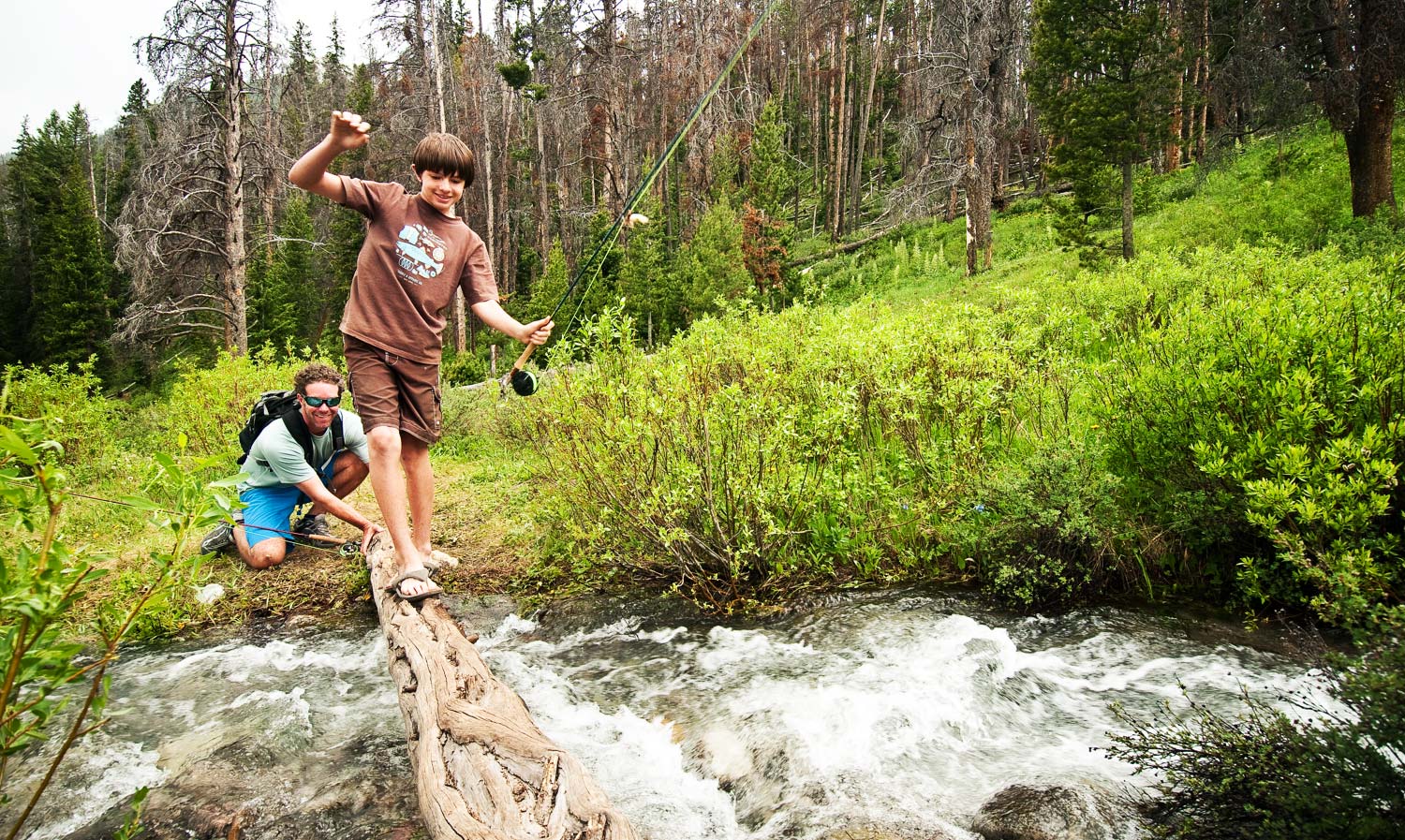
By Justin Pickett
Bicycles, Red Ryders, footballs, and Barbie dolls.
These are among the many things that get scribbled onto Christmas lists this time of year in hopes of finding them beneath the tree on the 25th morning of December. Easy enough. A trip to the local department or sporting goods store can handle those requests.
But what about when a fly rod makes the list? Or maybe it didn’t, and you are just a super awesome parent that wants to introduce their kid to fly fishing?!
My first fly rod was a Christmas gift from my parents. It was a Scientific Anglers starter kit that I had seen in a Bass Pro magazine. I didn’t have a fly shop close by, and the internet was in its infancy, so finding options and checking things out first-hand just wasn’t an option. I remember showing it to my parents and just jotting it down at the top of my wish list. I knew nothing about what I wanted, or needed, and neither did my parents. I just wanted something, anything, to get me started… and then to figure out what the heck tippet was???
Luckily for today’s kiddos, things aren’t quite as vague. A quick internet search can pull up a handful of options for the beginning angler interested in getting their feet wet. Whether you’re looking for a first rod for your little tike, or maybe the next teenage protige, several companies have you covered for just about every fly fishing scenario. You won’t find many bells or whistles on these rigs, but as an initial investment into fly fishing, these kits are perfect for getting a young angler on the water without breaking the bank.
So, if a fly rod has found its way onto a Christmas list in your family, make sure you give these kits a look-see!
Echo Gecko
With a modest, forgiving action and kid/hippy-friendly cosmetics, the Gecko is ready for action. Featuring a small lower grip for two-handed casting, the Gecko can be fished with one or two hands. With a comfy EVA grip and Echo’s lifetime warranty, the Gecko will keep your kid fishing through the learning curve.
Redington Minnow
Read More »Swinging Streamers on Big Water
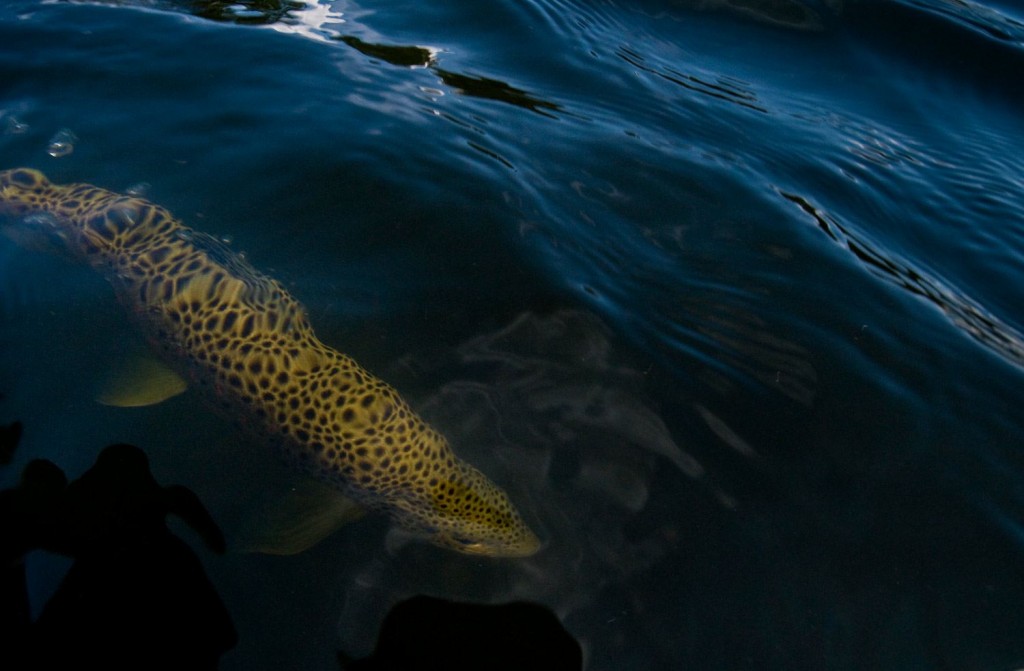
By Kent Klewein
MOST STREAMER FISHERMAN OUT THERE WOULD AGREE THAT POUNDING THE RIVER BANKS WITH A STREAMER WILL CATCH TROUT JUST ABOUT ANYWHERE.
If you’re willing to put in the time and hard work eventually you’ll be rewarded with a big fish. During high water flows on rivers where habitat is insufficient out in the main river, many trout will relocate to the banks where they can use the irregular banks and it’s abundant cover to shelter themselves out of the excessive current. There next move, once they’ve gotten to the banks, is to find prime ambush spots where they can easily pick off prey moving by. This is why casting to the bank and ripping streamers back to the boat is so effective. You’re repeatedly putting your streamer right in the kitchen where good numbers of fish will be feeding.
The majority of the time this scenario works great, but what do you do when you find yourself in areas where the water is super deep and the fish are sitting on the bottom? These places make it extremely difficult for anglers using the pounding the bank technique to keep their streamers down deep in the strike zone during a steady retrieve. Even with a full sinking fly line the cards are stacked against you. Don’t get me wrong, it can still work, especially if you cast upstream of your target water, and give your streamer time to sink before you begin your retrieve. Unfortunately, you won’t always have the time nor the room to pull this off, and that should have you searching for an alternative method that’s better suited for fishing your streamers in these deep water locations.
Swing Streamers through deep water hot spots
The best method I’ve found to consistently get hookups from deep water fish is to swing your streamers across their noses. This allows you to keep your streamers in the face of the deep water fish longer, which often will yield more strikes.
Step 1: When possible anchor your boat upstream and slightly across from your prime deep water. (It could be a nice drop off, a series of buckets, or just a long deep run or pool. The main point is that the water is too deep for you to use a standard strip retrieve, and anchoring up will provide you time to work the area thoroughly).
Step 2: Make a cast
Read More »Listen To Your Heart
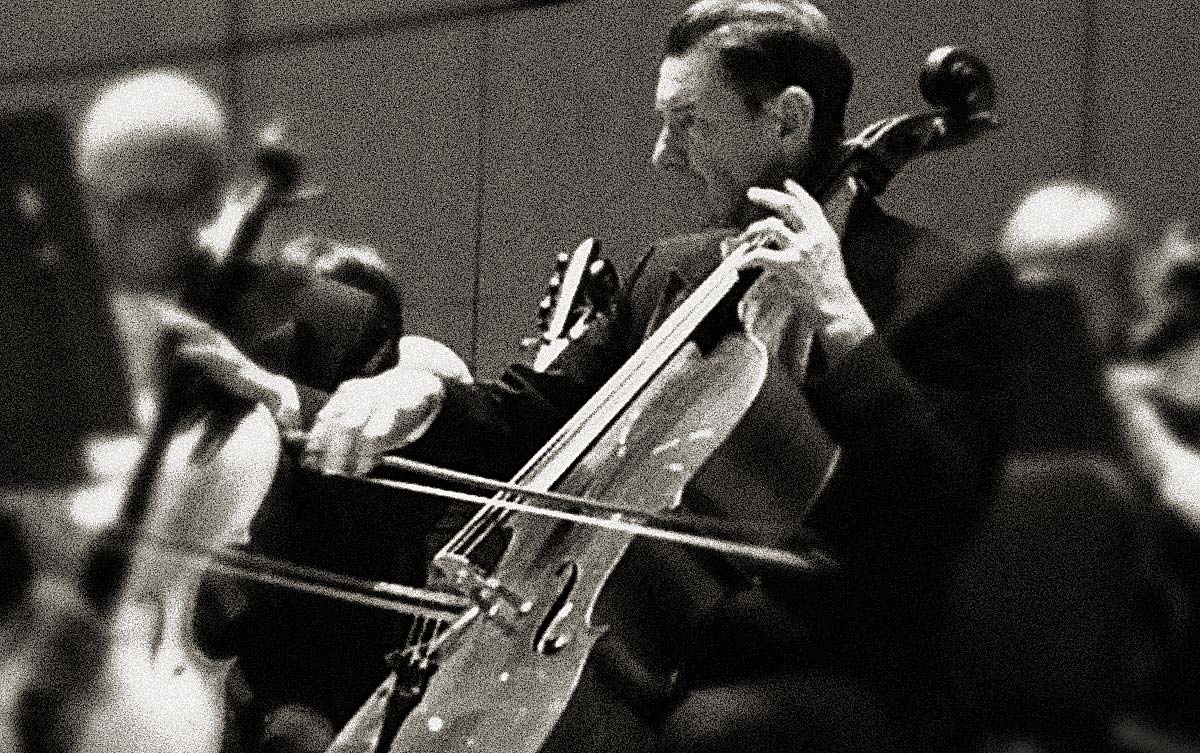
Hear I am, in the front row of Symphony Hall, tears streaming down my face, thinking about Beethoven.
If you’re wondering what this has to do with fly fishing, that’s a fair question. Stick with me for a bit and maybe I’ll get there. Maybe not. First you’re going to hear about Beethoven, and a little about me.
Music has always been a huge part of my life. It’s one of a few things I am truly passionate about. My musical taste has never been defined by genre. I deeply love some pieces from every style of music, and passionately hate many more. It’s hard to have a conversation with me about it. I know what I think. At heart, my aesthetic is punk rock. Long before we coined that term. I have always been attracted to artists who rebelled. Creators so passionate and singular in their vision that they angered way more people than they attracted. For me, these are the ones who get it, and no one got it like Beethoven. If you trace the family tree of punk back past Joe Strummer, Iggy Pop, Brian Jones, Jerry Lee Lewis and Hank Williams, you will eventually find the first punk to stand erect and scream at the sky was likely Beethoven.
Of everything he wrote, the piece that really gets to me is the Ninth. I’m in pretty good company saying that it is the single most powerful piece of music ever written. I’ve been a regular at the Atlanta Symphony Orchestra for over thirty years and have had the chance to see the Ninth performed several times. I was even lucky enough to attend a dress rehearsal, with Yoel Levi conducting the orchestra and the late Robert Shaw the chorus, in which they played the fourth movement twice! My wife and I saw it again last night and it was one of the most powerful musical experiences of my life.
I had a bit of an epiphany there in the front row. I’m going to share it with you but first you should understand that I am not a musicologist or musical historian, just an enthusiastic fan. Scholars have argued about the meaning of the Ninth Symphony since it was written. I’m certainly not going to settle that. In the end, like any piece of art, the Ninth belongs to every one who listens to it. Its meaning is that which you ascribe.
Beethoven was a troubled dude. He had the reputation for being an asshole
Read More »Tie the Chard Choker Permit Fly
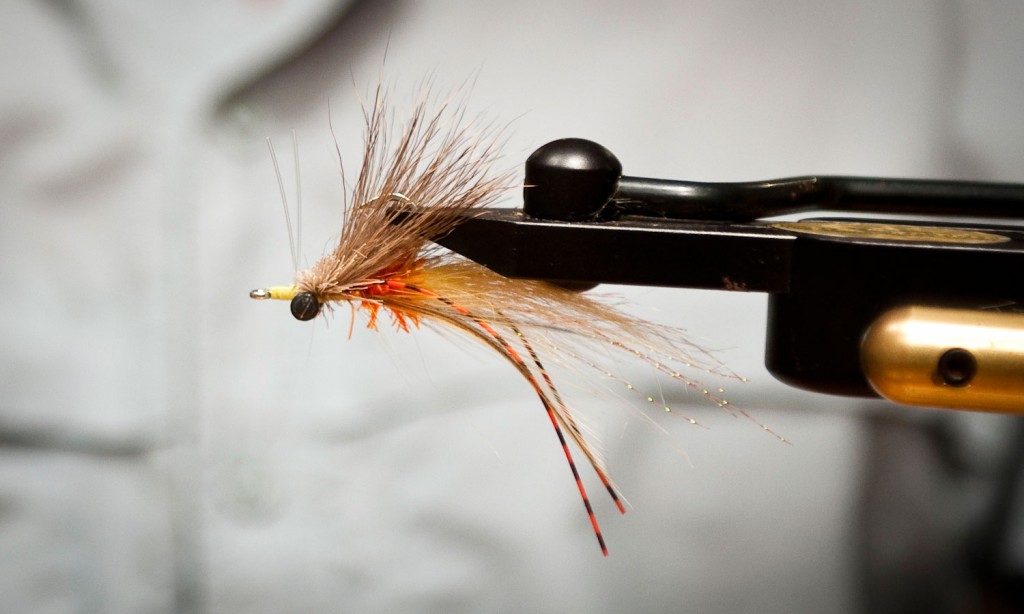
PERMIT FISHING IS AS EXACTING AS IT GETS.
When asked to list the top ten reasons permit will refuse a fly, Bruce Chard listed, among other things: a butterfly in Indonesia flapped its wings and because that’s what they do.
Getting a shot a a tailing permit is a test of an anglers resolve. Everything must be done perfectly. Even if everything is done perfectly there’s no guarantee of an eat. The first thing the angler must do is choose the right fly.
For tailing permit in shallow water the Chard Choker is a good choice. Check out the video to learn to tie this killer permit fly.
Read More »Be Stealthy Like Czech Nymphers
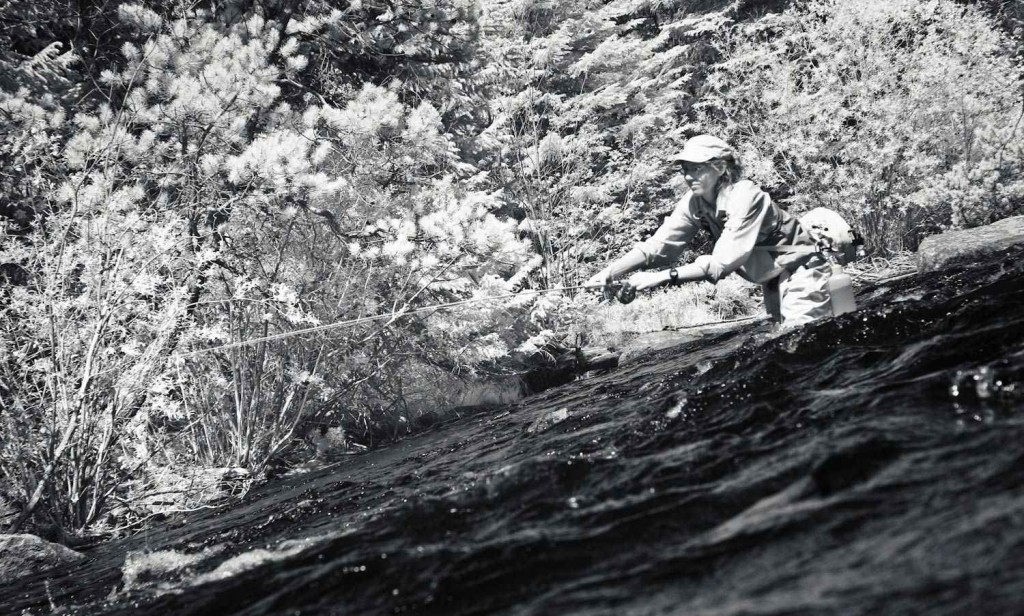
I’m not afraid to admit I’m not a big fan of Czech nymphing.
I’m not an aficionado of the popular three-fly nymph rig either. It’s not the right rig for fly anglers that lack discipline or are daydreaming fly casters. Furthermore, a freshly tied rig can become a birds nest instantly, simply by a landed fish, rolling in the net. That being said, I’m not saying Czech nymphing doesn’t work, it undoubtedly has it’s place in trout fishing, and can be highly effective at times, it’s just not my first choice.
Here’s what I’ll admit and also highly respect about the die hard Czech nymph fisherman out there. Most are very good at approaching fishing holes with complete stealth so they don’t spook fish. They take the time to think out their approach before casting, making sure they’re positioned perfectly so they can execute the best presentation and drift with their flies. Why do they do this you ask? Because success in czech nymphing demands it. Fly anglers fishing this rig are limited to short distance casts and drifts. This ensures they’ll stay in constant contact with their flies for strike detection and will also be able to maintain proper fly depth during their drifts.
You’ll never see a veteran czech nympher fishing out of his/her boundaries, and that’s why we should be paying more attention and adopting some of their techniques into our everyday fly fishing practices. It doesn’t matter one bit whether you’re a dry fly purist or prefer to nymph fish with an indicator, like I do. Far too often, I see anglers
Read More »I’ve Got A 6 Foot Bed That Never Has To Be Made.
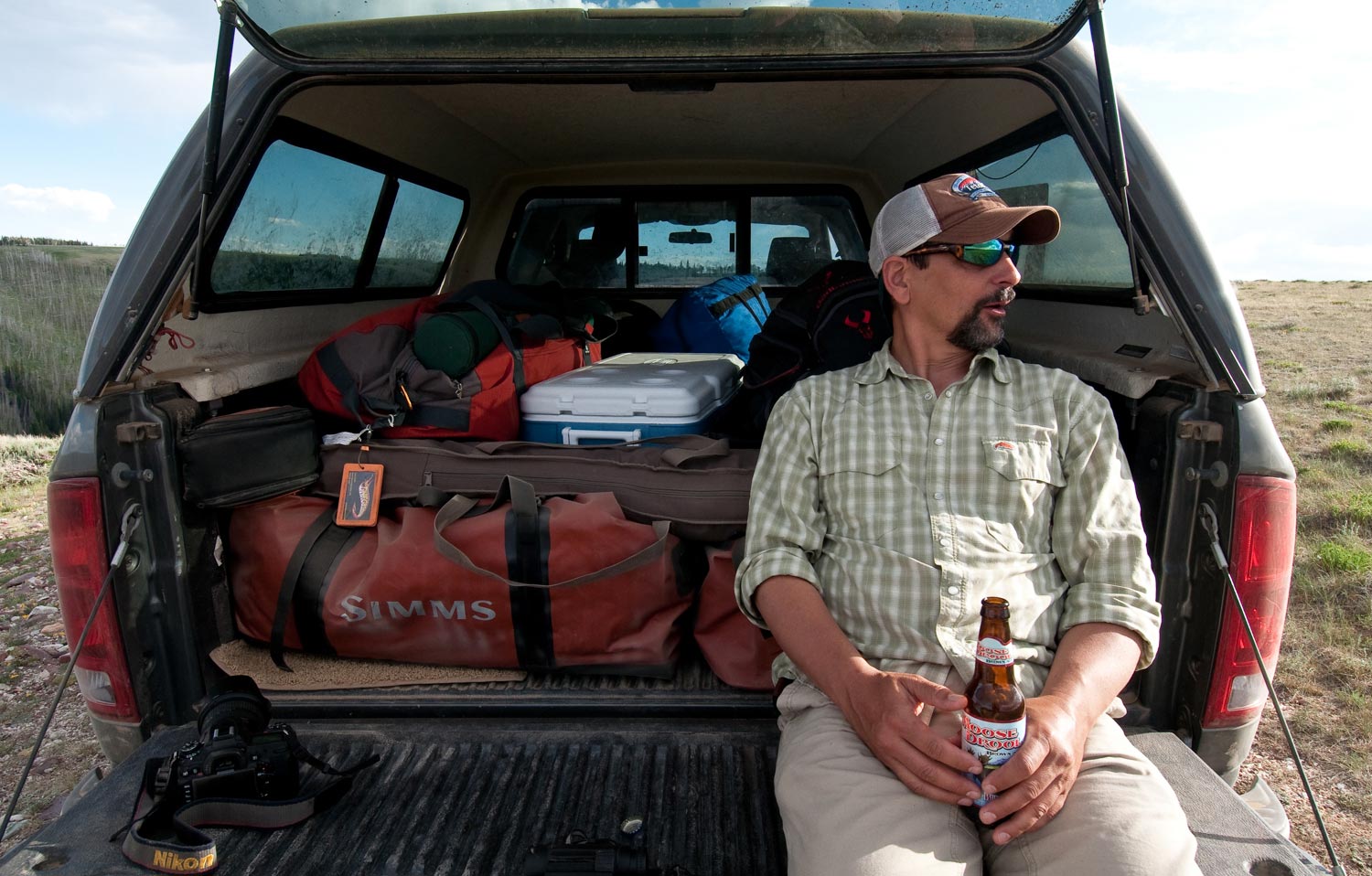
By Kyle Wilkinson
I did something interesting the other day.
Something I haven’t done in years. I voluntarily didn’t go fishing. It was this past Saturday and the sun was shining and my wife was at work. (She’s a hair stylist, which I’ll add is the perfect line of work for a spouse to be in if you like to fish since they have to work every Saturday.) Aside from the fact that Saturdays always find me streamside when I’m in town, it’s a new year and that all-important ‘first fish of the year’ still needs to be caught. A quick scroll through Instagram will show that countless people have already crossed this annual milestone off their list- including some of my co-workers. But nope, the wading boots weren’t getting wet that day.
2016 was a big year for me, with over 130 days spent on the water between guiding and personal fishing. Running a schedule like that puts a lot of wear on your gear, as well as your vehicle. Thus the reason for not fishing- I really needed to clean my truck. This chore had been put on the backburner for the past bunch of months and if you’ve been in it lately you would be able to tell. It was getting pretty bad.
I pulled around to my garage, parked next to the open door- and just as I’ve done countless times- began pulling stuff out by the armful and tossing it on the floor. Boat bags, duffle bags of extra clothes, rod tubes, hip packs, sling packs, wet wading neoprene socks, 3 pairs of waders, 2 pairs of boots, my Yeti 65, what my wife would likely think is too many empty beer cans, some empty Gatorade and water bottles, three collapsible chairs (2 of which still worked), my roll top table, a half a dozen tangled leaders and a few loose strike indicators. Through all of this, I couldn’t help but find myself reflecting back on the past year and the memories that this heap of dirty gear helped create. It was as if I was instantly reliving the entire 2016 season- the nights spent sleeping in the bed, the early morning departures and late night arrivals, the cold beers on the tailgate while
Read More »